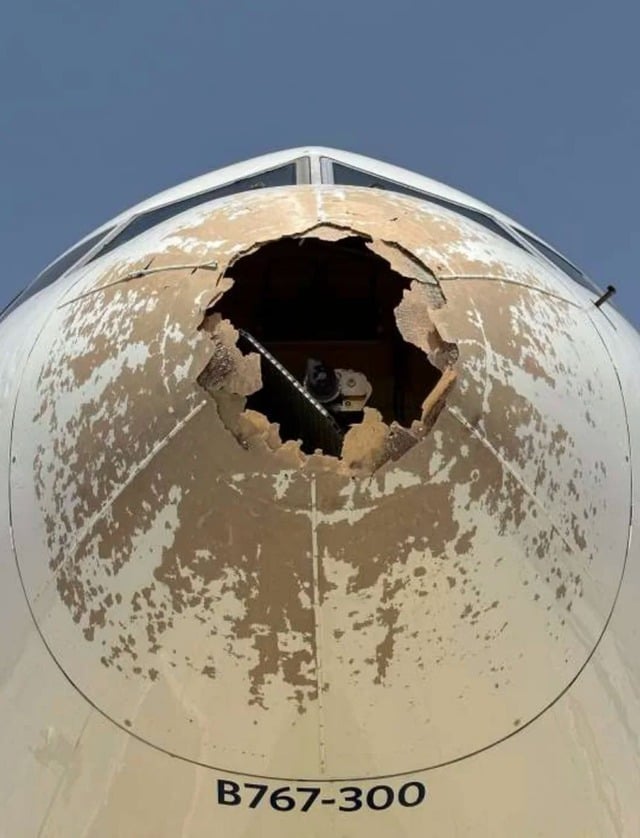Pilots and dispatchers of US carrier Delta Air Lines failed to consider all available weather information when they flew the plane into a damaging hailstorm in Italy in 2023, Italian transport investigators ruled in a report released last Thursday.
On July 24, 2023, a Boeing 767 taking off from Milan's Malpensa Airport bound for John F. Kennedy International Airport quickly encountered severe turbulence and hail.
The report concluded that "the crew's delayed decision" to change flight path caused damage to the aircraft.
"It was terrifying," passenger Steven Coury told CNN at the time, saying he heard loud bangs on the plane's wings.

Delta Air Lines cockpit window shattered by hail in 2023, according to Italian accident report
PHOTO: ANSV
The pilots could not turn right to escape the hail because of the Alps, so they turned left, but the plane was damaged.
"As I began to turn left, I saw a flash of light on the windshield, followed by a sudden crack," the co-pilot reportedly told investigators.
In addition to the cracked windshield, the plane's nose was punctured, the wing was dented, and some engine parts were damaged. The crew diverted to Rome for an emergency landing.
“I really wondered why we were allowed to take off in such a violent hailstorm,” Coury said. Radar satellite imagery showed a high likelihood of severe weather. However, the pilot’s weather briefing, provided by dispatchers, did not include satellite radar imagery. However, the pilot was able to access it on a tablet in the cockpit before the doors closed.
The report also noted that air traffic control did not warn the flight about the hail, nor did the pilots request it. Delta's meteorology department could have predicted the weather along the planned flight path using satellite radar imagery. This did not happen.

Delta Air Lines plane nose damaged after flying into hail in 2023, according to Italian accident report
PHOTO: ANSV
There were 12 crew members, 8 flight attendants and 214 passengers on board that day.
If an aircraft flies through hail, it risks significant damage to the nose (radar canopy), windshield, and engine air intakes, resulting in loss of visibility and even engine failure. While aircraft can land safely after encountering hail, and pilots can often avoid hail using weather radar, the impact of large hailstones at high speeds can cause dents and cracks in the structure, endangering flight safety.
Source: https://thanhnien.vn/dieu-gi-xay-ra-khi-may-bay-gap-mua-da-185251007113358818.htm







![[Photo] Prime Minister Pham Minh Chinh chairs the 16th meeting of the National Steering Committee on combating illegal fishing.](https://vphoto.vietnam.vn/thumb/1200x675/vietnam/resource/IMAGE/2025/10/07/1759848378556_dsc-9253-jpg.webp)




























![[Photo] Super harvest moon shines brightly on Mid-Autumn Festival night around the world](https://vphoto.vietnam.vn/thumb/1200x675/vietnam/resource/IMAGE/2025/10/07/1759816565798_1759814567021-jpg.webp)



































































Comment (0)